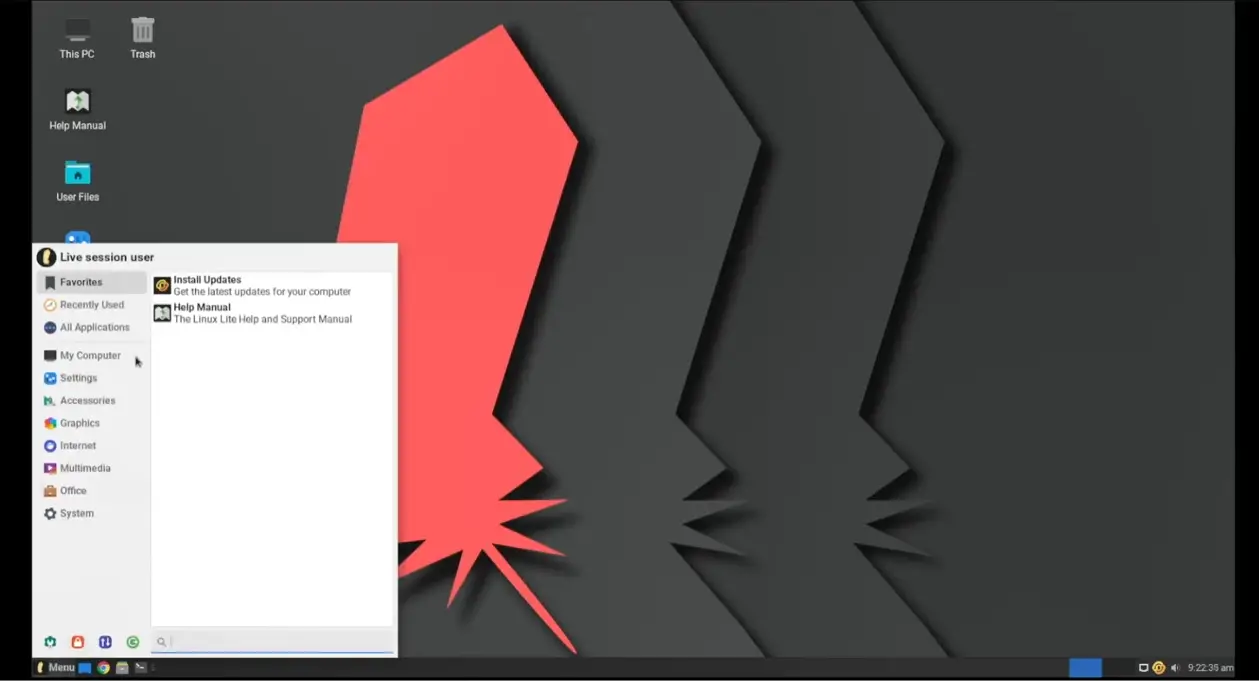Linux Lite Vs. Xubuntu: Lightweight Xfce Distros Face-off

Executive Summary

Linux Lite and Xubuntu are two user-friendly and lightweight Linux distributions that cater to different user preferences and computing needs. While both these operating systems utilize the Xfce desktop environment as their core foundation for providing a speedy computing experience, they diverge in specific areas such as software selection, target audience, and user interface customization capabilities. This in-depth analysis dissects the key distinctions between Linux Lite and Xubuntu, offering valuable insights into the unique strengths and suitability of each distro.

Introduction
Linux Lite and Xubuntu are widely recognized as beginner-friendly Linux distributions that prioritize speed and efficiency. These operating systems are carefully crafted to revive aging hardware or seamlessly operate on underpowered machines without compromising functionality. By leveraging the lightweight Xfce desktop environment, both Linux Lite and Xubuntu ensure an intuitive user experience while consuming minimal system resources, making them ideal choices for those seeking a lightweight and responsive computing environment. However, beneath their shared Xfce roots, subtle differences in design philosophy, software offerings, and target audience emerge.
Desktop Environment
Xfce
As a lightweight and highly customizable desktop environment, Xfce has gained significant popularity among users seeking a fast and resource-friendly computing experience. With its user-friendly interface and intuitive menu system, Xfce allows for seamless navigation and easy access to applications. The desktop’s modular nature enables users to personalize their workspace by adding or removing panels, applets, and themes, giving them complete control over their desktop experience.
- High level of customization: Users have the ability to tailor their desktop experience by adding or removing panels, applets, and themes, ensuring a highly personalized workspace.
- Well-organized menu system: The intuitive menu system in Xfce provides easy access to applications and system settings, simplifying navigation and enhancing productivity.
- Lightweight and resource-efficient: As a lightweight desktop environment, Xfce consumes minimal system resources, making it suitable for older or less powerful computers.
- Regular updates and support: Xfce receives regular updates and support from the open-source community, ensuring its stability and compatibility with the latest hardware and software.
Linux Lite and Xubuntu both harness the capabilities of the Xfce desktop environment. Nonetheless, each distro takes a distinct approach in terms of user interface design and the out-of-the-box software selection.
Target Audience
Linux Lite
Linux Lite primarily targets users transitioning from Windows or macOS to Linux. It aims to provide a familiar computing experience by adopting a Windows-like layout and pre-installing popular software applications that users are accustomed to on those operating systems. Linux Lite’s user-centric approach makes it a suitable choice for beginners and non-technical users seeking a user-friendly and intuitive Linux environment.
- Windows-like interface: Linux Lite’s desktop layout and menu system are designed to resemble Windows, making it easy for users familiar with Windows to transition to Linux.
- Pre-installed software: Linux Lite comes pre-loaded with a comprehensive suite of applications, including LibreOffice, GIMP, VLC Media Player, and Firefox, eliminating the need for users to manually install essential software.
- Excellent documentation and support: Linux Lite provides extensive documentation and support resources, designed to assist beginners in their transition to Linux and resolve any technical issues they may encounter.
Xubuntu
Xubuntu, on the other hand, caters to a wider range of users, including Linux enthusiasts, tinkerers, and experienced users. It emphasizes providing a customizable and flexible computing environment that allows users to tailor their systems to their specific needs and preferences. Xubuntu’s focus on customization and open-source philosophy appeals to users seeking a more versatile and configurable Linux experience.
- Highly customizable: Xubuntu empowers users with granular control over their desktop experience, enabling them to customize every aspect of their system, from the panel layout to the choice of applications.
- Extensive software repositories: Xubuntu offers access to a vast repository of open-source software, providing users with a wide selection of applications to choose from.
- Active community support: Xubuntu benefits from a large and active community of users and developers, who provide support and contribute to the distro’s development.
Software Selection
Linux Lite
Linux Lite follows a curated approach to software selection, pre-installing a carefully chosen set of applications that cater to the needs of everyday users. This includes popular applications such as LibreOffice for office productivity, GIMP for image editing, VLC Media Player for multimedia playback, and Firefox for web browsing. While this approach ensures a familiar and user-friendly experience, it may limit the options for users seeking more specialized or niche software applications.
- Pre-installed software: Linux Lite comes with a pre-selected suite of applications that cover essential tasks such as office productivity, multimedia playback, and web browsing.
- Easy software installation: Additional software can be easily installed through the graphical package manager or the terminal, providing access to a wide range of applications.
- Focus on stability and reliability: Linux Lite prioritizes stability and reliability by thoroughly testing and selecting software packages included in the distribution.
Xubuntu
Xubuntu adopts a more flexible approach to software selection, providing users with a wider range of options to customize their systems. While it comes with a core set of essential applications, users have the freedom to install and remove software according to their individual needs and preferences. This approach empowers users to tailor their systems to specific workflows or use cases, making Xubuntu a suitable choice for power users and those seeking a more personalized computing experience.
- Extensive software repositories: Xubuntu grants users access to a vast repository of open-source software, including both popular and niche applications.
- User-driven software selection: Xubuntu does not pre-install a specific set of applications, giving users the flexibility to choose and install the software they need.
- Customization and flexibility: Xubuntu’s software selection approach allows users to craft a system that aligns precisely with their requirements and preferences.
System Requirements
Linux Lite
Linux Lite is renowned for its low system requirements, making it an ideal choice for older or less powerful hardware. It can comfortably run on systems with as little as 512MB of RAM and 8GB of storage space. This makes Linux Lite a viable option for users with limited hardware resources or those seeking to breathe new life into aging computers.
- Low RAM requirements: Linux Lite can run smoothly on systems with as little as 512MB of RAM, making it suitable for older or resource-constrained machines.
- Minimal storage space: Linux Lite requires only 8GB of storage space for a complete installation, allowing it to be installed on devices with limited storage capacity.
- Wide hardware compatibility: Linux Lite supports a wide range of hardware, including older and less powerful systems, ensuring compatibility with a variety of devices.
Xubuntu
While Xubuntu shares Linux Lite’s commitment to providing a lightweight computing experience, it has slightly higher system requirements. It is recommended to have at least 1GB of RAM and 16GB of storage space for a comfortable and lag-free experience. Xubuntu’s slightly increased resource requirements make it more suitable for systems with moderately powered hardware or those willing to allocate more resources to their Linux environment.
- modest RAM requirements: Xubuntu requires a minimum of 1GB of RAM for optimal performance, striking a balance between resource efficiency and a smooth user experience.
- Adequate storage space: 16GB of storage space is recommended for a complete installation of Xubuntu, allowing for the installation of essential applications and user data.
- Hardware compatibility: Xubuntu supports a wide range of hardware, including both newer and older systems, ensuring compatibility with a variety of devices.
Conclusion
Linux Lite and Xubuntu stand out as two exceptional lightweight Linux distributions that offer distinct experiences tailored to different user preferences and computing needs. Linux Lite excels in providing a user-friendly and familiar computing environment, making it an ideal choice for beginners or those transitioning from Windows or macOS. Its curated software selection, low system requirements, and Windows-like interface make it a great option for everyday computing tasks. Xubuntu, on the other hand, caters to a broader audience, including experienced users and those seeking a highly customizable and flexible Linux experience. Its vast software repositories, extensive customization options, and slightly higher resource requirements make it suitable for power users and those seeking a more personalized computing environment. Ultimately, the choice between Linux Lite and Xubuntu depends on individual preferences, computing needs, and the specific requirements of each user.
Keyword Phrase Tags:
- Lightweight Linux distributions
- Xfce desktop environment
- Linux Lite vs. Xubuntu
- User-friendly Linux experience
- Customizable Linux distro

i think that linux rules supreme in the realm of lightweight distros. Xubuntu is cool and all, but Linux Lite is just so much more polished and user-friendly.
lol, i cant believe anyone would even consider using linux lite over xubuntu. xubuntu is way better in every single way.
ive never even heard of linux lite before. whats the difference between that and xubuntu?
i think youre all wrong. i think that both linux lite and xubuntu are great distros, and it really just depends on what you need them for.
oh yeah, linux lite is so much better than xubuntu. its so much better that i cant even tell the difference between them.
wow, great article. i learned so much about linux lite and xubuntu. now i can finally make an informed decision about which one to use.
i think that linux lite is the best distro for people who want to use their computers to do stuff. xubuntu is better for people who want to use their computers to look at pictures of cats.
i love linux lite! its so fast and easy to use. i would recommend it to anyone.
i hate linux lite. its so slow and buggy. i would not recommend it to anyone.
whats the difference between linux lite and xubuntu?
i think that linux lite is better than xubuntu because its faster and more user-friendly.
oh yeah, linux lite is so much better than xubuntu. its so much better that i cant even tell the difference between them.
wow, great article. i learned so much about linux lite and xubuntu. now i can finally make an informed decision about which one to use.
i think that linux lite is the best distro for people who want to use their computers to do stuff. xubuntu is better for people who want to use their computers to look at pictures of cats.
i dont really have an opinion on linux lite or xubuntu. i think that they are both good distros.